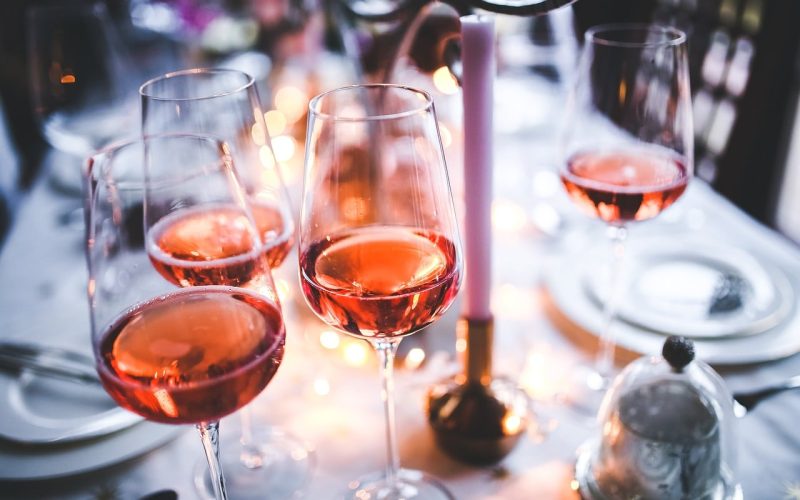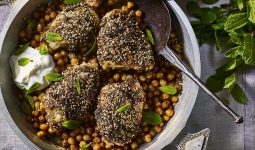Rose wine has existed since the early 19th century and is quickly becoming the favorite drink of many wine lovers.
It has been used globally for occasions ranging from get-togethers to wedding parties.
Rose wine has become a go-to wine for many wine lovers. Who would not want to get their hands on wine when they can, right?
With the rise in popularity in recent years, many winemakers are choosing to produce rose wines alongside their usual red wines. So then, how is rose wine made?
Knowing how rose wine is made can help you determine if you prefer a style, as each method of production results in unique wines.
Each method will result in various colors and styles of rose, depending on the producer and the region you are drinking from.
For example, a rose wine from Provence in France is pale pink in color, light and crisp.
While in other regions, you can see rose wines with deeper color and more body.
There are so many unique rose styles to try! Although the method of wine production isn’t usually listed on the label, a little research on the winery or wine region you’re buying from can give you more information about the rose you’re drinking.
The traditional rose wine production process has elements of both red and white wine production.
It adopts the same fermentation process as red wine but ferments at the temperature of white wine.
Although you may have heard some winemakers mix red and white wine to create rose, this approach is banned in most EU countries.
Here’s our article on the methods of how rose wine is made, which begins in the vineyard.
What is Rose Wine?
Before moving on to the main topic, ” How is rose wine made?” It would be nice to give a brief definition of rose wine.
Rose wine is simply a genre of wine, like white and red wine. They are structurally the same.
The grapes are picked from the vineyard and taken to the winery, and the grape juice is fermented to create alcohol.
It is a common type of wine, too. They are defined mainly by two factors.
- Color: their color is a bit specific. It is either pink or red, but not as red as red wine.
- Aroma: they usually have fine aromas. Aromas ranging from citrus fruit, grapefruit, cherry e.t.c
Types of Wines
You might be curious to know what other types of wines are out there. So here are some.
Aside from rose wines, red wines, and white wines, there are some other wines, such as :
- Fortified wine
- Sparkling wine
- Dessert wine
Essential Tools Required for Making Rose Wine
Rose wines cannot be made without some essential tools. That was why I thought it was necessary to list them as well.
Some of the essential tools and ingredients include:
- Red grapes
- Large container (fermenter) in food steel or plastic.
- Active dry yeasts (fermentation starter)
- Sieve
- Secchi
- Fruit press
- Bottle filler
- Mostimeter
- Glass bottles and caps and so on.
How Is Rose Wine Made?
To answer the question, “How is rose wine made?” There are different methods.
Traditionally, there are three ways to prepare rose. Depending on who you talk to, you’ll get a different answer on the “best” way to do this.
As the saying goes. “ask four different winemakers a question, and you will get 16 different answers”. This is to prove that there is no hard and fast rule on what’s “right” to winemaking.
There are general guides on how to do things, but part of the beauty of winemaking is that it combines art and science.
Everyone has their interpretation and method, and that’s normal. After all, all that matters is for the wine to taste heavenly.
Different winemaking production methods will result in different colors and wine looks.
The common methods of rose wine production include:
- Maceration
- Saignee
- Direct press and
- Blending
- Fermentation
- Bottling
1. Maceration
This is the most common method of producing rose wine. The maceration method involves using red grapes to make rose wine.
The method also involves harvesting grapes ( mostly red grapes), bringing them into the winery, and crushing them to release their juices. The grapes are left and allowed to macerate or soak for some time.
The maceration is done to allow the grape skins to add some taste to the juice. The maceration or soaking lasts about 48 hours (2 days), depending on the rose wine style.
For example, the rose wines thus produced in the Provençal style macerate for a very short time, just long enough to reach the pale pink color of the wine.
Have you ever heard the saying, “The darker the wine, the better the sweetness”? Well, this saying is about to be refuted because wine’s darkness is only due to a longer period of maceration. If the grape skins are left to macerate longer, they tend to produce a dark wine.
This prolonged contact with the skin can also give more texture and body to the wine. That’s why dark wines are known to have more texture and fullness than pale pink wines.
Rose wine is undoubtedly one of the nicest styles of wine to pair with food, and an extended maceration can allow the wine to complement a wider range of food pairings.
Finally, once the skins have been macerated to the winemaker’s liking, the juice is drained and fermented to make the rose wine.
2. Saigneé
There is no definite method for answering the question “how is rose wine made,” but the Saignee method is pretty much a definite method.
This method directly translates to “bleeding,” the saignée (“san-yay”) from a French word.
It involves the removal ( bleeding off ) of juice after limited contact with the grape skins. This method produces richer and more flavored rose wine than the other methods.
This bled-off juice is then produced into rose wine. The Saignée method of making rose wines is typically more complex and fuller-bodied than other styles. Try pairing these with BBQ or Asian food.
3. Direct Press
This is another common wine production method, which includes red grapes.
This technique involves pressing the grape bunches directly (whole or stripped) without first macerating them.
It could be pressed with hands or legs or by adding weight to the grapes, depending on the quantity and the person.
The grapes are harvested, brought to the winery, and pressed to extract the juices from the skins.
Unlike the maceration technique, the juice is drained off the skin almost immediately, and they are not soaked for long.
Therefore, as expected, the quick separation of skin and juice results in a pink-colored wine.
Some winemakers may opt to blend in some red wine at the end to achieve the desired color.
4. Blending
As the name implies, this method involves adding or combining a small amount of red wine with white wine, resulting in pink wine.
Just as the ancients diluted their still red wines with water to make a rose, today’s winemakers also make rose wines by mixing different liquids. But instead of water, they are diluted with white wine.
Blending is also not limited to any method. It can be involved at the end of any of the other methods above.
For example, if a winemaker starts by pressing red wine grapes directly.
They might add a touch of red wine at the end to reach the desired shade of pink. This is because it doesn’t take much red wine to stain a pink wine.
This practice is commonly used to make rose champagne. Winemakers will produce a white wine from a grape variety of their choice, often Chardonnay, and add a small percentage of still red wine from the darker, more tannic Pinot Noir or Pinot Meunier.
Why would a winemaker choose this method over any of the previous ones? When it comes to producing rose champagne or sparkling rose in general, wine grapes like Chardonnay have more lipids.
These lipids help create smaller bubbles in the wine, called mousse and maintain a higher concentration of bubbles for longer to prevent the wine from going flat.
From an aromatic and taste point of view, mixing white wine with red wine allows more flavors to emerge. It’s like adding more than one spice to a dish.
Chardonnay brings notes of apple, pear, and lemon, while red wine brings notes of red cherry, raspberry, strawberry, etc.
In short, blending wines creates more complexity than you would see if you were using just one varietal. However, the blending method is said to be forbidden by most of the EU (European Union)
5. Fermentation
This process is involved mainly in the production of alcoholic wines. The red grapes with their skins are placed into a stainless steel fermentation tank, and then yeast is added to convert the fruit sugar into alcohol and carbon dioxide.
The fermentation is done at a lower temperature and minimally for about 12 to 36 hours. The only time fermentation is done without the grape skins for rose wine is during the Saignee method.
In the Saignee method, the skins are not usually present in the juice during fermentation tank fermentation.
6. Bottling
I cannot complete this article on “how rose wine is made” without discussing the last and most important step: bottling!
We all love that wine bottle when we see it. Bottling is one of the most important steps because it is one of the most attractive factors for buyers.
Most wines are bottled immediately after making them to capture their delicate fruity flavors, and they are best when fresh.
Before bottling, the rose wine will have fining agents added to it to remove any haziness in its appearance. It will then be ready for immediate consumption.
For every way to make a rose, there is a unique take on the pink libation waiting to be enjoyed.
This is what makes Rose such an interesting and unique wine. There’s a rose for almost any food pairing, with tons of flavor profiles waiting to be experienced.
Some of the Best Rose Wines
It is not enough to enlighten yourself only about the question, “How is rose wine made.” A list of some of the best rose wines would also be nice.
Listed below are some of the best rose wines with their best purposes.
1. Minuty Wines
They are fresh, bright, and crisp. This Provence rose wine is perfect for sipping while snacking. Trust me when you consider it; it would be your next best snacking wine.
2. Pinot noir
This pinot noir rose wine has a fruity aroma with a crisp. It is best enjoyed with appetizers like a cheese platter or a summery salad. Nice!
3. Miraval Rose wine
This wine is described as having a fuller body than other types. Miraval wine is said to pair well with most main dishes, or better still; it can be enjoyed alone, without pairing with any side dish.
4. Belle Glos
It is said that this is the best wine for beginners. If you think you don’t like rose wine? This bright, balanced, easy-drinking wine would be ready to convince you otherwise. This wine is best served at parties because everyone would love it.
5. Champagne Henriot
It’s also one of the best rose wines out there. It suits occasions like birthdays, graduation, or holidays to celebrate. It has a fruity, well-balanced flavor to it.
6. Matthiasson Wines
The best food pairing wine. It has a citrus aroma and flavor, making the wine blend perfectly well with food, especially spring food. It is perfect for food such as salads and frittatas and includes all your favorite picnic fares.
7. Copain
This wine is known for its light and bright color. It brings with it hints of strawberry, peach, and tropical citrus. This kind of wine would be perfect for a by-the-pool summer sipper.
8. Santi Infinito Rose wine
This beautifully balanced rose wine, which is pale pink in appearance, hails from Italy. It is said to pair well with chicken and fish, salad, and (of course) pasta.
11. Underwood Rose Bubbles
This is the best-canned rose wine. It is suitable for picnics because of its portability. It has a cherry and watermelon note and, of course, a crisp finish. Yum!
12. Syrah Rose wine
Syrah wine is not your typical rose wine. They are deep in color and feature pepper, olive, and strawberry notes. Don’t be intimidated by the pepper; it still tastes nice. It is often referred to as a very bold wine. It is best paired with vegetables and pasta dishes.
13. Veleta
An elegant and decent-priced wine. It is one of Spain’s most popular rose wines, and it is bought and drunk in different countries. Veleta wine includes almost everything: dishes, snacks, vegetables, and fruits. It is one of a kind.
Note: The list of the best rose wines is not only limited to this. There is still a wide variety of them, just in case your favorite was not listed.
Conclusion
I hope I have discussed and given justice to the topic “how rose wine is made.” With the list of best wines listed above, I hope it will not be much of a problem when you next need wine or when you next have a party or celebration to plan.
Enjoy!








